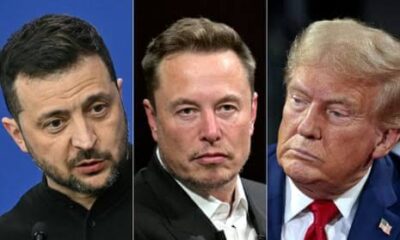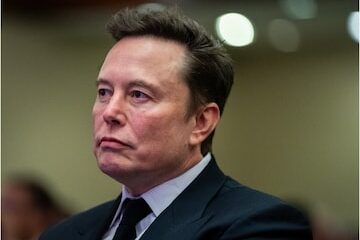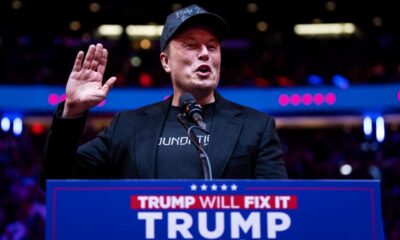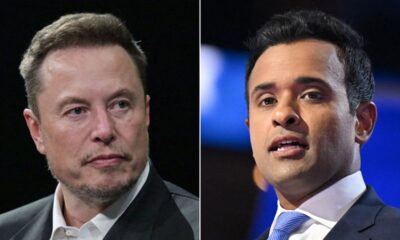NEWS
Breaking News: Say Goodbye Uber in the US – Elon Musk’s new project that will put this sector out of work from this day on – will cost only $80,000…. Read More

After years of development and testing, Tesla is ready to unveil one of its most groundbreaking products: the highly anticipated Robotaxi. This vehicle, which promises to reshape the future of transportation, will be introduced by Tesla’s CEO, Elon Musk, at an event in Los Angeles on October 10th.
What is the Robotaxi?
Tesla’s Robotaxi, also known as the Cybercab, is a fully autonomous transportation service. This means the vehicle will have no steering wheel or pedals, completely eliminating the need for a human driver. The goal of this project is to offer a more efficient and affordable alternative to traditional transportation, capable of competing with conventional taxis and services like Uber.
The ‘We Robot’ event
The official unveiling of the Robotaxi will take place during an event called We Robot, a name that clearly references the well-known film I, Robot. At this event, Musk will share all the details about this visionary product, which has the potential to revolutionize urban mobility. While official pricing has not yet been disclosed, it’s speculated that the Robotaxi could cost around the same as Tesla’s Cybertruck, which is priced at $80,000 (73,000€).
How will the Robotaxi work?
The Robotaxi will function similarly to services like Uber, but with one key difference: there will be no driver operating the vehicle. Passengers will be able to request a ride via an app, and the Robotaxi will take them from point A to point B without any human intervention.
One interesting feature of the project is that Robotaxi owners will be able to rent out their vehicle when they’re not using it. Instead of driving the car themselves, they can send it to pick up passengers and generate additional income, all with just a tap in the app. This proposal introduces a new business model where vehicles become a source of passive income for their owners.
The future of transportation
The concept of autonomous transportation isn’t new for Tesla. Elon Musk has been talking about his vision for driverless vehicles for nearly a decade, and the Robotaxi appears to be the next logical step in that evolution. Tesla’s goal is to offer a service that is cheaper than a bus ride, making it accessible to a large portion of the population.
This service could drastically reduce the cost of travel worldwide, as the lack of a human driver significantly lowers operational costs. Additionally, the Robotaxi is designed to operate 24 hours a day, increasing its efficiency and making it a highly competitive alternative to other forms of transportation.
The challenges of full autonomy
Despite technological advancements, fully autonomous driving still faces significant hurdles. Regulatory challenges and local laws are among the barriers Tesla will need to overcome before the Robotaxi can operate in cities around the world. However, if anyone can make this type of transportation a reality, it’s Tesla.
Elon Musk has reiterated multiple times that his vision is for these autonomous vehicles to safely and efficiently navigate city streets, eliminating many of the risks associated with human drivers. Furthermore, the removal of steering wheels and pedals in the Robotaxi’s design represents a bold step toward a future where cars don’t rely on drivers to function.
With the launch of the Robotaxi, Tesla aims not only to revolutionize transportation but also to redefine the relationship between people and their vehicles. By removing the need for a driver, the Cybercab promises a more efficient, cost-effective, and autonomous future for everyone. While there are still some challenges to overcome, the release of this vehicle marks a turning point in the automotive industry.
The combination of cutting-edge technology, forward-thinking vision, and an innovative business model makes Tesla’s Robotaxi a product with the potential to change the way we move around the world. We may be witnessing the first step toward a driverless future.
























